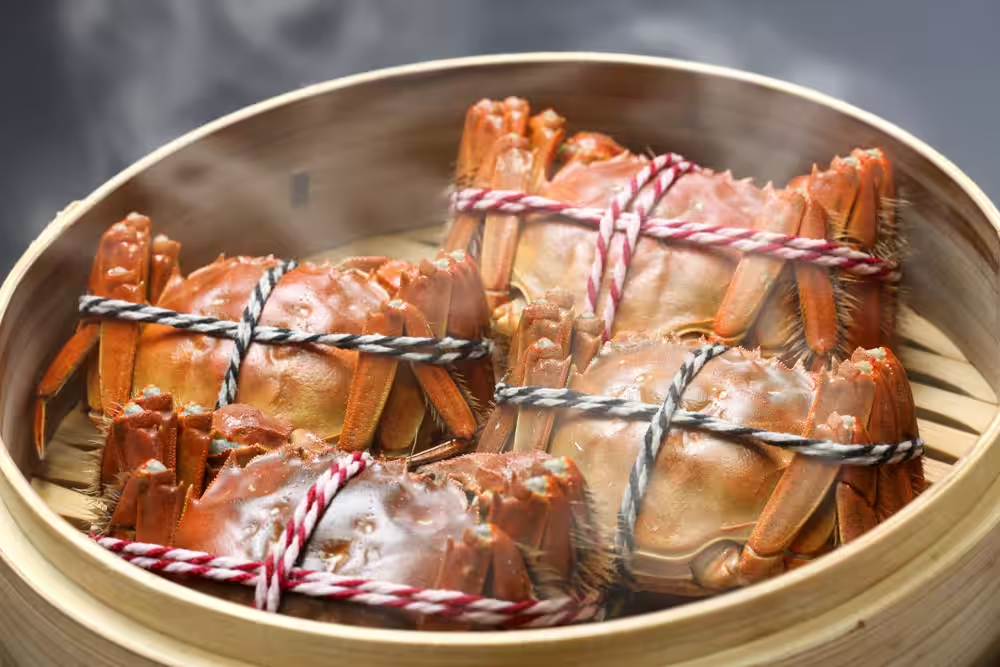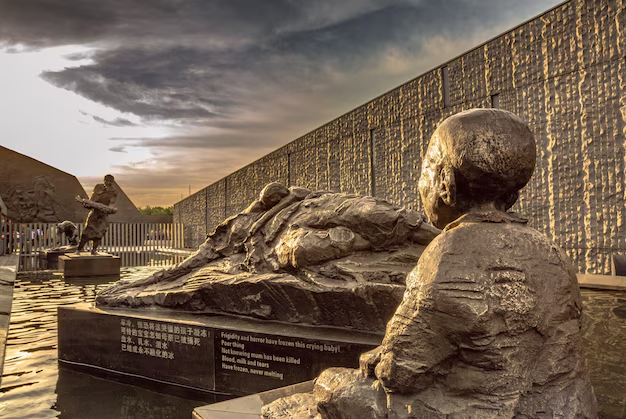








A Traveler’s Guide to Shanghai
Shanghai, China’s largest city and a global financial hub, is a dazzling blend of futuristic skyscrapers, colonial history, and vibrant culture. Known for its iconic skyline along the Huangpu River, world-class shopping, and diverse culinary scene, Shanghai offers something for every traveler—whether you’re a history buff, foodie, or urban explorer. This guide will help you plan an unforgettable trip to this dynamic metropolis.
Why Visit Shanghai?
Shanghai is where East meets West, offering a unique mix of tradition and modernity. From the historic charm of the Bund to the neon-lit streets of Nanjing Road, the city showcases China’s rapid development alongside its rich heritage. Highlights include the serene Yu Garden, cutting-edge museums, and Michelin-starred dining. With excellent public transport, a cosmopolitan vibe, and proximity to picturesque water towns, Shanghai is an ideal destination for a city break or a longer exploration.
How to Get There
Shanghai is well-connected internationally and domestically, with two major airports and extensive rail networks:
By Air: Shanghai Pudong International Airport (PVG): Handles most international flights, located 30 km east of downtown. Major airlines like China Eastern, Air China, and international carriers operate here. To Downtown: Take the Maglev Train (8 minutes to Longyang Road Station, ¥50), Metro Line 2 (45–60 minutes, ¥7), or a taxi (40–60 minutes, ¥150–200). Shanghai Hongqiao International Airport (SHA): Serves domestic flights and some regional routes, 13 km west of downtown. To Downtown: Metro Lines 2 or 10 (30–40 minutes, ¥5), or taxi (20–30 minutes, ¥50–80).
By Train: Shanghai is a high-speed rail hub with stations like Shanghai Railway Station and Hongqiao Railway Station. Bullet trains connect to Beijing (4.5–6 hours), Hangzhou (1 hour), and Suzhou (30 minutes). Book tickets via Trip.com or at stations; fares range from ¥50–550 depending on distance.
By Bus or Car: Long-distance buses serve nearby cities like Hangzhou or Nanjing, but trains are faster.
Must-See Attractions
No.1 The Bund (外滩)
The Bund is Shanghai’s most recognizable landmark, symbolizing the city’s transformation from a 19th-century trading hub to a global metropolis. Its 52 historic buildings, built in architectural styles like Art Deco, Gothic, and Renaissance, tell the story of Shanghai’s colonial past as a treaty port. Across the river, Pudong’s glittering skyscrapers showcase China’s rapid modernization.





No.2 Shanghai Disneyland (上海迪士尼)
Shanghai Disneyland offers a unique Disney experience with attractions not found in other Disney parks, such as Tron Lightcycle Power Run and Pirates of the Caribbean: Battle for the Sunken Treasure. The park’s Enchanted Storybook Castle, the largest of its kind, is a stunning centerpiece. With Chinese-inspired elements, like the Garden of the Twelve Friends and authentic dining options, it seamlessly blends Disney magic with local culture. Its proximity to Shanghai’s vibrant city center makes it an accessible and exciting getaway for visitors of all ages.





No.3 Yu Garden (豫园)
Yu Garden is one of China’s finest examples of classical garden design, featuring pavilions, rockeries, koi-filled ponds, and intricately carved bridges. Its name, meaning “Garden of Happiness,” reflects its purpose as a peaceful retreat. The garden is surrounded by the lively Yuyuan Bazaar, a bustling market with traditional snacks, souvenirs, and teahouses, making it a perfect spot to experience Shanghai’s old-world charm alongside its vibrant culture.





No.4 Nanjing Road (南京路)
Nanjing Road is more than just a shopping destination—it’s a microcosm of Shanghai’s past and present. East Nanjing Road, with its neon lights and bustling crowds, evokes the glamour of 1920s Shanghai, while West Nanjing Road boasts luxury boutiques and skyscrapers. The street attracts over a million visitors daily, offering everything from global brands to local snacks, historic department stores, and stunning views of Shanghai’s skyline.





No.5 Tianzifang (田子坊)
Tianzifang, often called Shanghai’s “SOHO,” is a living testament to the city’s ability to preserve its past while embracing contemporary trends. Unlike the polished Xintiandi nearby, Tianzifang retains an authentic, lived-in feel, with local residents still occupying many of the Shikumen houses. The area, spanning about 7 hectares, transformed from a 1930s residential and factory zone into a creative hub in the late 1990s, thanks to artists like Chen Yifei, who established studios here. Today, it boasts over 29 design studios, 58 craft galleries, and 65 antique shops, alongside international restaurants and cozy bars.





No.6 City God Temple (隍城庙)
The City God Temple is more than a religious site; it’s a cultural hub that captures the essence of old Shanghai. The temple honors three city gods—Huo Guang (a Han Dynasty general), Qin Yubo (a Yuan Dynasty scholar), and Chen Huacheng (a Qing Dynasty general)—believed to protect the city’s residents. Its traditional architecture, with intricate carvings and red lanterns, contrasts beautifully with Shanghai’s modern skyline.





No.7 Shanghai Museum (上海博物馆)
The Shanghai Museum is celebrated for its meticulously curated galleries, showcasing treasures like bronze vessels, jade carvings, calligraphy, and porcelain. Its 11 permanent galleries and rotating exhibitions offer a deep dive into China’s artistic and historical legacy, from the Neolithic period to the Qing Dynasty. The museum’s unique building, designed to resemble an ancient Chinese bronze ding (cauldron), symbolizes the blend of tradition and modernity that defines Shanghai. Whether you’re an art enthusiast or a casual traveler, the museum provides an accessible and enriching experience in one of China’s most vibrant cities.





No.8 Shanghai Natural History Museum (上海自然历史博物馆)
As one of China’s largest natural history museums, it offers a fascinating journey through the history of life on Earth, from the origins of the universe to modern ecosystems. The museum’s highlights include a 26-meter-long Mamenchisaurus skeleton (Asia’s largest dinosaur exhibit), interactive displays, a 4D theater, and hands-on fossil excavation labs. Its eco-friendly design, with a green roof and a 109-foot cell wall that floods the interior with natural light, makes the building itself an attraction. Perfect for kids and adults alike, the museum combines cutting-edge technology with engaging storytelling to explore evolution, biodiversity, and Shanghai’s natural history.



No.9 Shanghai Tower (上海中心大厦)
Shanghai Tower is more than just a skyscraper—it’s a symbol of China’s rapid modernization and architectural innovation. Its twisted, glass-clad design, inspired by traditional Chinese dragon scales, is both visually stunning and eco-friendly, earning it LEED Platinum certification. The tower’s observation deck on the 118th floor, one of the highest in the world, offers panoramic views of Shanghai’s skyline, including landmarks like the Oriental Pearl Tower and the Bund. Visitors can also explore exhibits on the tower’s design, enjoy high-end dining, or experience the world’s fastest elevators, reaching speeds of 20.5 meters per second.





No.10 1933 Old Millfun (1933老场坊)
Once one of the largest slaughterhouses in the Far East, 1933 Old Millfun has undergone a remarkable transformation since its renovation in 2007. Its brutalist yet elegant design, featuring umbrella-shaped columns, spiral staircases, and latticed windows, blends Eastern and Western architectural styles, creating a visually captivating experience. Today, it’s a hub for Shanghai’s creative scene, hosting fashion shows, art exhibitions, and performances, while offering a glimpse into the city’s industrial history. The complex’s eerie yet artistic atmosphere, combined with its proximity to other attractions like The Bund, makes it a unique addition to any Shanghai itinerary.





No.11 China Art Museum (中华艺术宫)
The China Art Museum offers a deep dive into China’s artistic evolution, blending historical and modern perspectives. Its standout attraction is the multimedia exhibit of “Along the River During the Qingming Festival” (清明上河图), a dynamic reimagining of a famous Song Dynasty scroll painting. The museum’s vast collection includes works by renowned Chinese artists, sculptures, and exhibits reflecting Shanghai’s cultural history. The building’s unique architecture, inspired by traditional Chinese corbel brackets and bronze vessels, is a visual spectacle in itself. Located near Pudong’s vibrant landmarks, it’s a must-visit for anyone exploring Shanghai’s modern art scene.





No.12 Xintiandi (新天地)
Xintiandi is a unique fusion of Shanghai’s traditional shikumen architecture—early 20th-century residences combining Chinese and Western styles—with contemporary urban living. It’s a cultural hub where you can explore the birthplace of the Chinese Communist Party, shop at high-end stores, dine at Michelin-starred restaurants, and soak in the city’s dynamic atmosphere. Whether you’re a history buff, foodie, or nightlife enthusiast, Xintiandi offers something for everyone, all within a compact, walkable area.





No.13 Zhujiajiao Water Town (朱家角古镇)
Zhujiajiao is one of Shanghai’s best-preserved water towns, offering a glimpse into traditional Jiangnan (south of the Yangtze River) culture. Its iconic Fangsheng Bridge, serene boat rides, and historic sites like the Qing Dynasty Post Office and Kezhi Garden make it a must-visit for history buffs, photographers, and those seeking an authentic Chinese experience. The town’s proximity to Shanghai (about an hour’s journey) makes it ideal for a half-day or full-day trip, combining ancient charm with modern accessibility. Whether you’re strolling along Beida Street, sampling local delicacies, or cruising the canals, Zhujiajiao promises a memorable adventure.



No.14 Shanghai Chenshan Botanical Garden (上海辰山植物园)
Chenshan Botanical Garden stands out for its diversity and innovative design, earning accolades like the 2011 Design Prize from the Shanghai Exploration and Design Trade Association. Its meticulously curated gardens showcase everything from cherry blossoms and roses to medicinal herbs and aquatic plants, with seasonal flower shows that draw visitors year-round. The garden’s Quarry Garden, built on a century-old limestone quarry, and the Blind Garden, designed for visually impaired visitors, highlight its commitment to inclusivity and environmental creativity. With family-friendly amenities, serene lakes, and cultural events like the Chenshan Grassland Music Festival, it’s an ideal escape from Shanghai’s urban hustle.



No.15 Huangpu River Cruise (黄浦江)
The Huangpu River is the heart of Shanghai, and a cruise offers unparalleled views of the city’s landmarks, including the Bund, Oriental Pearl Tower, Shanghai Tower, and Jin Mao Tower. By day, you’ll see the bustling river traffic and vibrant city life; by night, the skyline transforms into a dazzling display of neon lights and illuminated buildings. The cruise is perfect for photographers, families, couples, or anyone wanting to experience Shanghai’s past and present in one scenic journey.



Try Local Cuisine
Savor Shanghai delicacies like soup dumplings (xiaolongbao), scallion pancakes, and hairy crab during the season.





Getting Around Shanghai
Metro: The world’s largest subway system with 19 lines covering the city. Fares are ¥3–10, and stations have English signage. Download the Shanghai Metro app for real-time routes.
Buses: Extensive but less tourist-friendly due to Chinese-only signage. Fares are ¥1–2.
Taxis/Ride-Hailing: Taxis are plentiful (¥14 base fare), and Didi is widely used (English interface available). Expect ¥20–50 for short rides.
Bicycles: Mobike and HelloBike offer bike-sharing via apps (¥1–3/hour).
Walking: Areas like the Bund and Tianzifang are pedestrian-friendly.
Tip: Get a Shanghai Public Transport Card (¥20 deposit) for seamless metro and bus travel.
Tips for Travelers
Currency: The official currency is the Chinese Yuan (CNY). Credit cards are accepted in many places, but having cash or mobile payment apps like WeChat Pay or Alipay is recommended.
Language: While Mandarin is the official language, English is commonly spoken in tourist areas. Learn a few basic phrases in Mandarin to enhance your experience.
Stay Connected: Purchase a local SIM card or use portable Wi-Fi to stay connected.
Safety: Shanghai is generally safe, but always be cautious with your belongings in crowded areas.
Conclusion
With its dynamic energy and rich cultural tapestry, Shanghai promises an unforgettable travel experience. Happy exploring!














Leave a Reply